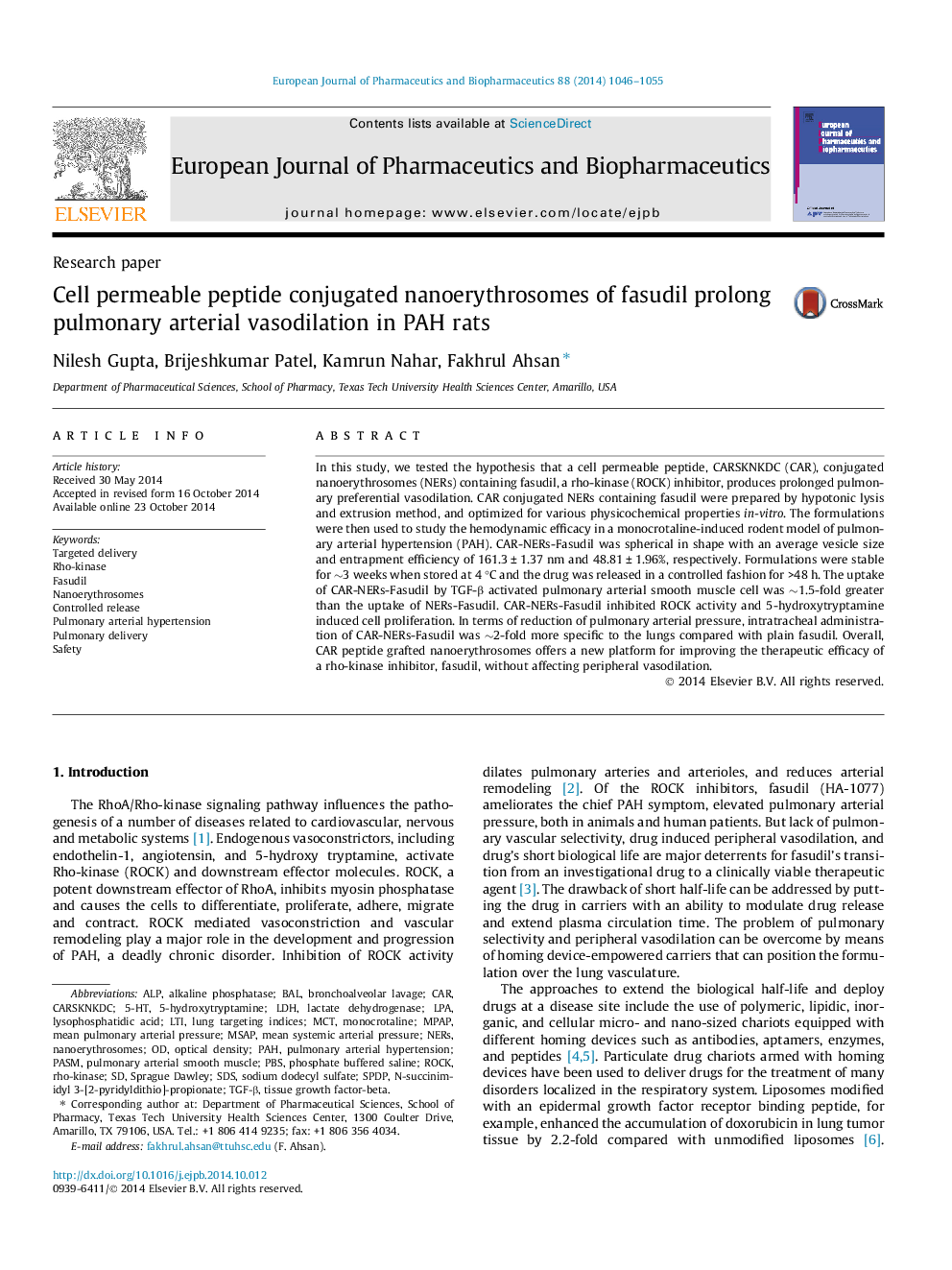| Article ID | Journal | Published Year | Pages | File Type |
|---|---|---|---|---|
| 2083542 | European Journal of Pharmaceutics and Biopharmaceutics | 2014 | 10 Pages |
•CAR-NERs-Fasudil was successfully prepared by hypotonic lysis + extrusion method.•CAR-NERs were spherical in shape containing ∼49% encapsulated fasudil.•Formulations showed controlled release behavior and were stable at 4 °C.•CAR-NERs were ∼1.5-fold more internalized by cells as compared to plain NERs.•CAR-NERs showed pulmonary preferential and prolonged vasodilation in PAH rats.
In this study, we tested the hypothesis that a cell permeable peptide, CARSKNKDC (CAR), conjugated nanoerythrosomes (NERs) containing fasudil, a rho-kinase (ROCK) inhibitor, produces prolonged pulmonary preferential vasodilation. CAR conjugated NERs containing fasudil were prepared by hypotonic lysis and extrusion method, and optimized for various physicochemical properties in-vitro. The formulations were then used to study the hemodynamic efficacy in a monocrotaline-induced rodent model of pulmonary arterial hypertension (PAH). CAR-NERs-Fasudil was spherical in shape with an average vesicle size and entrapment efficiency of 161.3 ± 1.37 nm and 48.81 ± 1.96%, respectively. Formulations were stable for ∼3 weeks when stored at 4 °C and the drug was released in a controlled fashion for >48 h. The uptake of CAR-NERs-Fasudil by TGF-β activated pulmonary arterial smooth muscle cell was ∼1.5-fold greater than the uptake of NERs-Fasudil. CAR-NERs-Fasudil inhibited ROCK activity and 5-hydroxytryptamine induced cell proliferation. In terms of reduction of pulmonary arterial pressure, intratracheal administration of CAR-NERs-Fasudil was ∼2-fold more specific to the lungs compared with plain fasudil. Overall, CAR peptide grafted nanoerythrosomes offers a new platform for improving the therapeutic efficacy of a rho-kinase inhibitor, fasudil, without affecting peripheral vasodilation.
Graphical abstractFigure optionsDownload full-size imageDownload high-quality image (318 K)Download as PowerPoint slide
